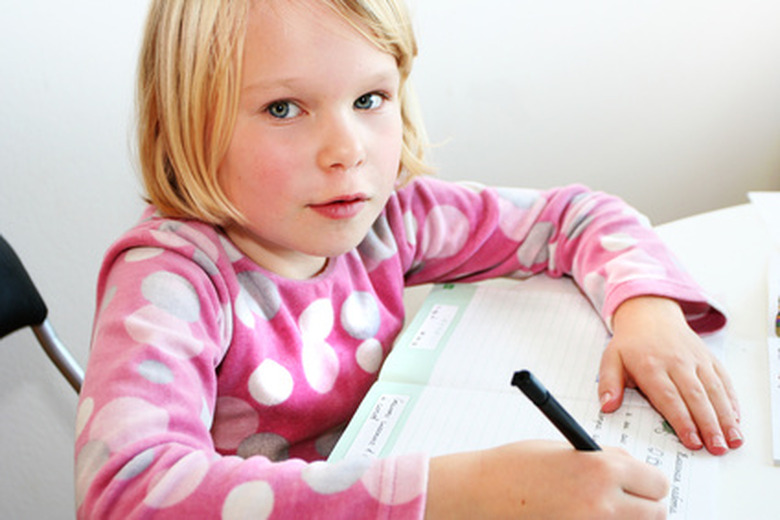How To Teach The Periodic Table To Fifth Graders
In many school districts, the periodic table is first taught as part of fifth-grade science. This is primarily an introduction to the periodic table and the elements, which students study in more depth in later grades. Lessons geared toward fifth graders should therefore focus on helping to develop students' familiarity with the elements and the structure of the periodic table. Activities that teach the history of the periodic table and definitions for atomic number, atomic mass and electron configuration will also help fifth graders begin to understand the periodic table.
Step 1
Explain that all matter is made up of the elements on the periodic table, and that the table is a way of organizing the elements based on their properties.
Step 2
Show students a periodic table and discuss how the elements are organized on the table. Explain that the atomic number is the number of protons in an atom, the atomic symbol is the letters that represent the element and the atomic mass is the average mass of an element in atomic mass units. Identify the different groups for students, such as metals, non-metals, actinoids, etc. and explain that an element's location on the table can tell a lot about the element.
Step 3
Bring in some samples of elements, such as a neon light, iron nails, a balloon filled with helium, a gold ring, sulfur from a rock kit, etc.
Step 4
Divide the students into groups and give each group a copy of the periodic table. Assign each group an element and have the students research their element, using the school library and the Internet. Each group should create a poster containing information about each element, including characteristics of the element, interesting facts, how it was discovered, a drawing of the element and what it is used for.
Step 5
Make bingo sheets containing symbols for the elements. Make several different sheets. Place cards with the names of the elements on them into a hat or box and pull them out one by one. Read out the name of each element, and students must mark off the corresponding symbol on their bingo sheets.
Step 6
Have a scavenger hunt. Divide the students into small groups. Each group must then finds 10 examples of elements from around the house. Students can take photos of their examples and create a presentation for the class. Students could bring in some of the smaller examples to show during their presentation. During each presentation, the rest of the class could guess the elements contained in each item.
Things Needed
- Bingo sheets
- Bingo cards
- Periodic table handouts
- Resource materials
- Samples of elements
Cite This Article
MLA
Magloff, Lisa. "How To Teach The Periodic Table To Fifth Graders" sciencing.com, https://www.sciencing.com/teach-periodic-table-fifth-graders-7818623/. 24 April 2017.
APA
Magloff, Lisa. (2017, April 24). How To Teach The Periodic Table To Fifth Graders. sciencing.com. Retrieved from https://www.sciencing.com/teach-periodic-table-fifth-graders-7818623/
Chicago
Magloff, Lisa. How To Teach The Periodic Table To Fifth Graders last modified August 30, 2022. https://www.sciencing.com/teach-periodic-table-fifth-graders-7818623/
